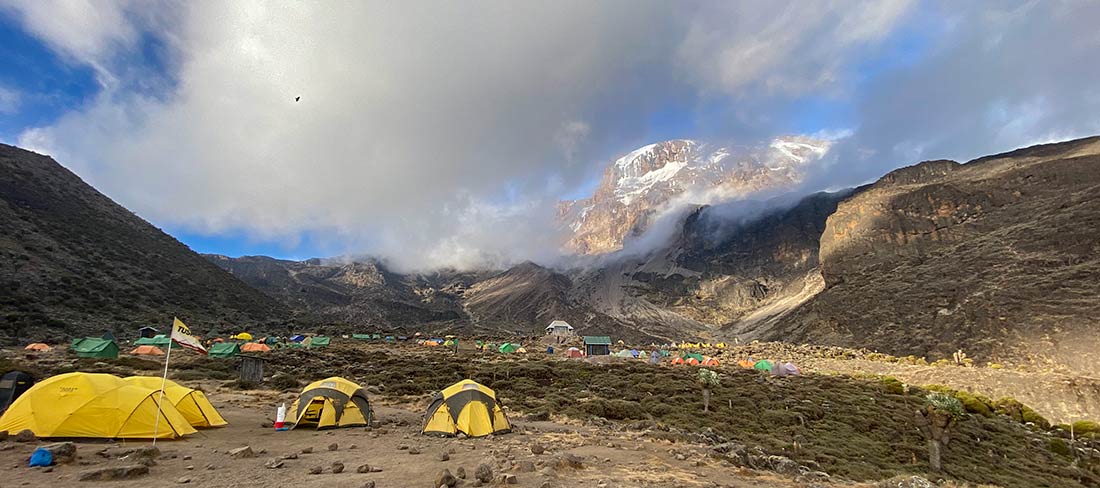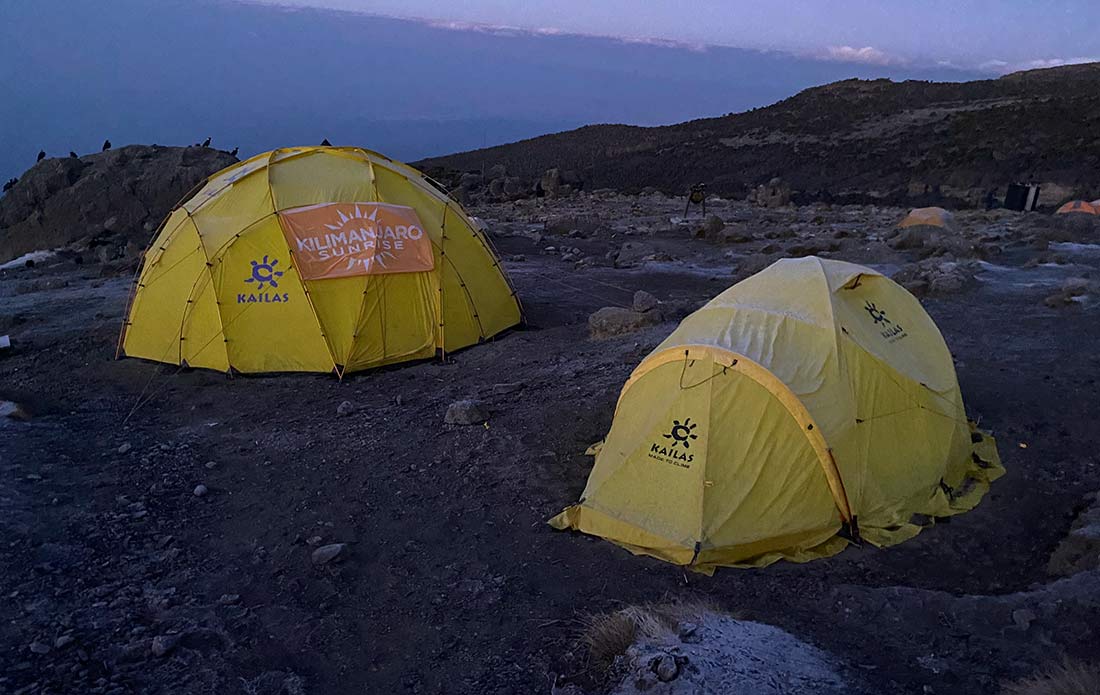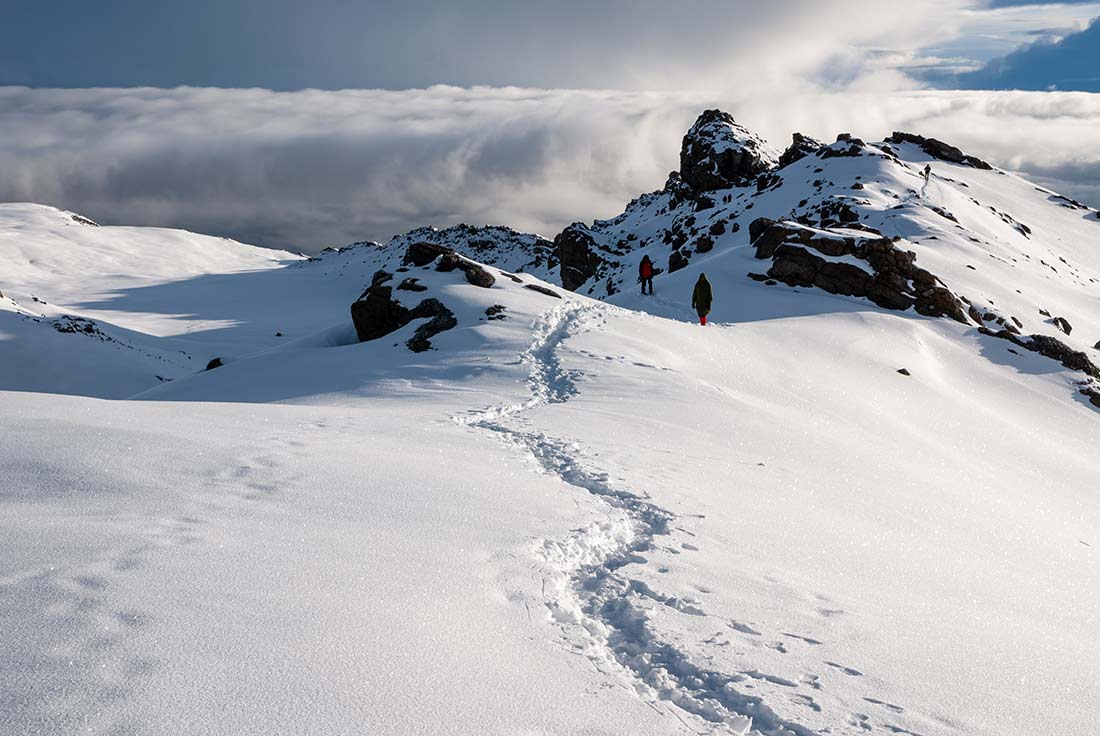Mount Kilimanjaro is a tall mountain. It stands 19,341 feet tall. It is actually the tallest freestanding mountain in the world. Which means it is not in a mountain range.
Despite it being in Africa it also gets very cold. Especially at the summit.
So what is the weather like in Kilimanjaro? To understand the weather, you’ll need some more information.
First of all, Tanzania does not have four seasons. Instead, it has two seasons. The wet seasons and the dry seasons.
The Wet Seasons
There are two wet seasons. They are normally referred to as the long rainy season and the short rainy season.
The long rainy season occurs from mid-March until the end of May. Sometimes it starts early and ends late. But most of the time it is pretty reliable. The rainy seasons will receive a lot more rain than other times of the year.
The short rainy season falls in November. The weather begins to get cloudier in mid-October and can last until the first week or so of December.
Since these two seasons receive most of the rainfall for the year, we do not book group climbs during that time.
However, if you are an avid outdoorsman and don’t mind a little bit of rain, you can book a private climb during those months. Keep in mind that the rain usually doesn’t start until the afternoon when you are at camp.
If sleeping on the wet ground doesn’t appeal to you, then you can still book a private climb on the Marangu route. It is the only route that has trekkers sleeping in permanent huts versus tents. The drawback to these huts is that they can get noisy since they sleep up to 30 people. But if you are climbing in the rainy season, then that may not even be an issue.
The other drawback to the Marangu route is trekkers go up and down the same route. This can make the route crowded. Again, not during the rainy season.
The Dry Seasons
The dry seasons are from mid-December through the middle of March and June through the end of October. All of these times are great to climb Kilimanjaro. See the table below to see how they vary.
| MONTH | TEMPS | RAIN | CLOUDS | CROWDS | |
|---|---|---|---|---|---|
 |
January | Warm | Medium | Low | High |
 |
February | Warm | Medium | Low | High |
 |
March | Moderate | High | Medium | Low |
 |
April | Moderate | High | High | Low |
 |
May | Moderate | High | High | Low |
 |
June | Cold | Medium | Medium | Medium |
 |
July | Cold | Medium | Low | High |
 |
August | Cold | Low | Low | High |
 |
September | Moderate | Low | Low | High |
 |
October | Moderate | Low | Medium | Medium |
 |
November | Moderate | High | Medium | Low |
 |
December | Moderate | Medium | Medium | Medium |
 Best Best |
 Okay Okay |
 Not Recommended Not Recommended |
Now that we have covered the rainy seasons, what is the typical weather on Kilimanjaro? That depends on the zone you are hiking through.
Climate Zones of Kilimanjaro
Mount Kilimanjaro has five distinct climate zones. They are the Cultivation, Rainforest/Montane, Heather/Moorland, Alpine Desert, and Arctic. You can read more about each zone here: https://kilimanjarosunrise.com/the-climate-zones-of-kilimanjaro/
Layers
Since you’ll be hiking through these zones, you’ll need to bring the appropriate laters for each. You can watch a video about these layers here:
Weather by Zone
The Cultivation Zone ends at the gates of Kilimanjaro. In other words, you don’t need to worry about how to dress there.
The first zone you should dress for is the Rainforest Zone. During the day, this zone can be humid and warm. The rain may drizzle or come down hard while you hike through it. The temperatures can get as high as 70+ degrees Fahrenheit. Prepare to sweat a lot.

At night, the temperatures do not vary too much, by 10-20 degrees Fahrenheit. You should be comfortable in hiking pants and a light pullover in the evening.
Once above the rainforest, you’ll be in the Moorland Zone. This zone can be quite warm and dusty as you ascend toward the Shira Plateau. You will probably wear shorts or convertible pants while hiking during the day. The temperatures will once again reach the 70s depending on the time of year. The sun will be hot.
At night, the temperatures will drop drastically. It can drop below freezing and you may wake up with frost on your tent. Make sure to bring any clothes hanging outside into the tent before you go to sleep. Furthermore, do not hang your clothes in the vestibule. The tents are designed to wick moisture from the sleeping area into the vestibule. As a result, your clothes may get wetter.

As you continue ascending, you’ll reach the Alpine Desert. The weather is almost the same as in the Moorland Zone. Only it is colder. The temperatures will be in the 50s and 60s during the day and again, below freezing at night.
Finally, when you are in the Artic Zone, the temperatures when you headed toward the summit could be at or below freezing. This is when you’ll wear the most clothing.
The darkness, wind, and cold could make this final push a bit uncomfortable. But like they say. “There’s no such thing as bad weather, only bad clothes”. Dress accordingly.
After the summit, you’ll descend rapidly through every zone. You’ll sleep the last night at the upper edge of the rainforest.
Final Thoughts
In conclusion, now that you know what the weather will be like on Kilimanjaro. Make sure you watch our videos and read our provided materials so you are prepared for whatever the mountain has in store for you. We want you to be as comfortable as possible while climbing and that starts with bringing the right clothing for the extreme temperature changes.
Click the button for the current weather on Kilimanjaro.




